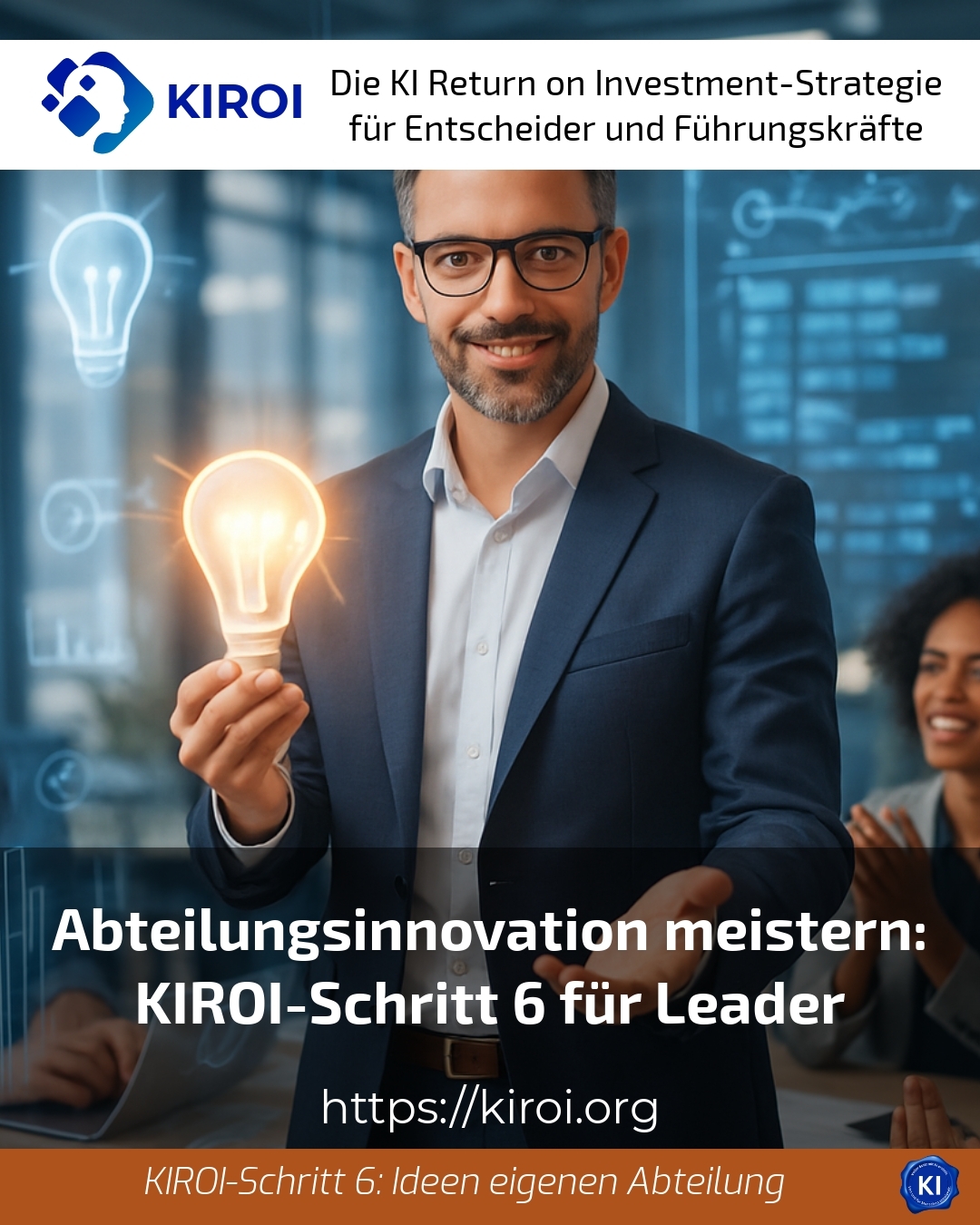Driving forward departmental innovation in a targeted manner
The success of an organisation today often depends on how well individual departments implement innovations. Departmental innovation is no coincidence, but the result of clear strategies and targeted support. Many managers are looking for effective ways to structure innovation processes in their teams. This is less about quick solutions and more about sustainable impetus and effective support. KIROI provides pragmatic support for artificial intelligence projects.
Understanding and applying concepts for departmental innovation
Departmental innovation starts with exploring the potential of your own unit in detail. For example, a sales team can use new AI-supported analysis tools to better identify customer needs and personalise offers. At the same time, the production department can use intelligent sensor technology to make quality assurance more precise and minimise downtime. In turn, an HR team benefits from AI-supported tools for applicant selection and employee motivation. In this way, differentiated approaches create new ways to increase efficiency and innovative strength within each department.
Practical examples of departmental innovation
KIROI BEST PRACTICE at company XYZ (name changed due to NDA contract) The finance team used AI-based forecasting models to make investment decisions faster and more accurately. Traditional work processes were supported and supplemented without overburdening the employees. The manager closely supported the change and ensured transparent communication and training.
KIROI BEST PRACTICE at ABC (name changed due to NDA contract) An AI-supported solution was introduced in the customer service department to automate the processing of routine enquiries. This gave the department new scope for complex customer interactions. The team was supported by workshops that taught them how to use the technology in a practical way.
KIROI BEST PRACTICE at DEF (name changed due to NDA contract) The IT department developed an AI assistant under supervision that automates repetitive tasks and recognises security gaps at an early stage. The innovation processes were implemented in small steps to ensure acceptance within the team. This created added value without excessive demands.
The role of managers in departmental innovation
Managers play a central role when it comes to supporting departmental innovation. They must not only communicate technical possibilities, but above all accompany change processes and recognise obstacles. Managers often report that resistance to new methods in the team is a challenge. This is where it helps to provide impetus, initiate workshops and stimulate discussions that enable a deeper understanding. In this way, departmental innovation is not perceived as a risk, but as an opportunity.
Examples of management support
KIROI BEST PRACTICE at GHI (name changed due to NDA contract) The manager initiated regular feedback sessions to share experiences with AI tools. This reduced fears and allowed ideas for improvement to be implemented directly. This created a culture in which departmental innovation was seen as a team affair.
KIROI BEST PRACTICE at JKL (name changed due to NDA contract) Training courses were offered in marketing to show specifically how AI can support the creative process. The manager ensured that projects were accompanied by clear goals and visible small successes.
KIROI BEST PRACTICE at MNO (name changed due to NDA contract) The management team used strategic coaching to sharpen their vision and prepare the department for future challenges. This enabled innovations to be implemented in a more targeted manner and with broad acceptance.
Providing impetus through targeted support
Successful departmental innovation is the result of a mixture of knowledge, courage and continuous support. KIROI coaching provides impetus in the identification of suitable AI applications for the respective department and supports managers in consciously managing change processes. Individual needs are addressed and specialist knowledge is imparted in a practical manner. Clients often report increased efficiency and higher employee motivation as a result of this practical support. This makes departmental innovation an achievable goal - without unrealistic promises, but with real added value.
My analysis
Departmental innovation requires clear orientation and experienced support, especially when technological innovations such as AI are used. Focussing on specific potential applications and supporting managers are crucial to overcoming resistance and unlocking potential. The KIROI model offers a structured approach for this. In practice, it has been shown that departmental innovation works best when it is understood as an ongoing process with individualised solutions.
Further links from the text above:
[1] AI as a threat or an opportunity in times of skills shortages?
[4] Sanjay Sauldie - KIROI Step 6: Own department
[6] KIROI Step 6: Own department - AI to increase efficiency
[8] Introduction to Artificial Intelligence according to the requirements - KIROI Framework















